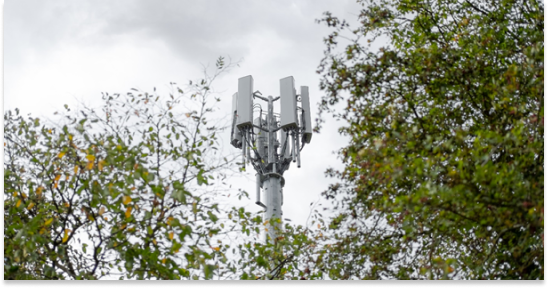The 4G LTE Amplifier: Accessing Need and Calculating Gain
Government safety regulations and a fixed battery life both limit the power of the built-in wireless card in your cellphone, tablet, or Wi-Fi router. While a wireless card’s power outage is directly relatedly to its range, manufacturers keep the power output in their cards low to preserve battery life and prevent radio wave exposure. In fact, most cards have a power output of just 32 milliwatts. Wireless cards are not powerful enough to transmit at peak rates, in remote areas, on their own. Rural residences and businesses, then, use a cellular repeater system, also known as a 4G LTE amplifier, to improve signal strength inside their buildings.
Cellphone repeater systems consist of two antennas that amplify and broadcast cellular signals from one location (usually outside a building) to another (inside the building). Specifically, these amplifiers contain:
– An external antenna(either omnidirectional or, better, directional) transmits with the nearest cell tower. Position this antenna in the onsite location with the strongest cell signal. This is usually either the rooftop of the building or, less common, inside the building’s attic.
– A signal amplifier, predictably, amplifies the signal received by the external antenna. The amplifier’s transistor magnifies signal strength by feeding the input current between the base and emitter wires, causing a larger output current to flow between the emitter and the collector wire.
– An internal antenna receives a signal from the signal amplifier and broadcasts the new signal inside. The internal antenna works best when it is in a central location within the building, positioned off the ground, and, if possible, placed away from walls.
These three pieces are connected with an electric cord that transfers a signal between the three devices. To prevent signal loss, keep the cord as short as possible. Always leave drip loops for safety, but never leave coils of cord or wrap the cord around anything. Cut instead. Keep in mind that for every one hundred feet of cord, the system loses 3.9 dB of signal strength.
At each of the connections in the cellular repeater system (one for the external antenna, two for the 4g lte amplifier, and one for the internal antenna), the system loses 0.5 dB of signal strength. Expect, then, your gains to suffer a 2.0 dB loss inherently. A lightning arrestor, for safety, should be the fourth piece of any cellular repeater system. Two dB is also lost at the lightning arrestor (accounting for its two connectors
Collateral loss is, necessarily, a part of signal gain. Understanding roughly how much strength is lost as the signal moves along the cellular repeater will help you select a system strong enough to provide the end gains you need.
While 4G LTE amplifiers are the most effective way to boost the cellular signal in remote areas, it is less expensive (though admittedly less effective) to use a standalone booster antenna in its place. In situations where a small boost is all you need, standalone antennas are an easy and sensible option.


